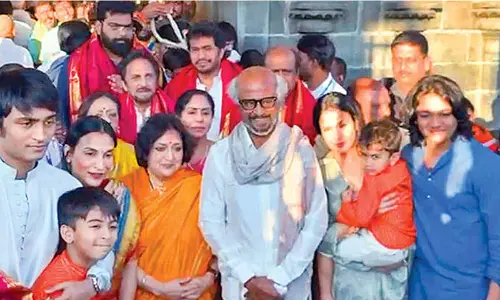A critique on Draft HECI Act

In the galore of reforms being proposed by the present Central government, there comes yet another illconceived measure aiming to scrap the existing University Grants Commission UGC As it appears, there is nothing new in the Draft, except transfer of the function of funding from UGC to the Ministry of MHRD Going by the very object and the functions intended to be performed by the HECI, the
In the galore of reforms being proposed by the present Central government, there comes yet another ill-conceived measure aiming to scrap the existing University Grants Commission (UGC). As it appears, there is nothing new in the Draft, except transfer of the function of funding from UGC to the Ministry of MHRD. Going by the very object and the functions intended to be performed by the HECI, the same are being attended to by the UGC, too. Except nomenclature, there is nothing new.
Taking the geography of the country with 29 States and 7 Union Territories and a vast number of higher educational institutions (HEIs) into account, would it be really feasible for the Ministry to take up the funding job directly and do justice to the HEIs? Without doubting the sincerity of the present government, in due course, it may lead to lopsided favorable treatment to some, to the neglect of the vast majority. As such, the State universities which are taking care of about 70 per cent of the higher education are extended a raw deal and are subjected to gross injustice. It becomes obligatory to the Ministry to correct these imbalances in the provision of central assistance to the State-run universities and colleges.
The draft has not provided any clarify as to the locus of the existing institutions like AICTE, NCTE, BCI, COA and many others. Already medical education is being dealt with separately with un-bridged powers accorded to MCI. As per the draft, the proposed HECI is entrusted with the job of taking measures to promote autonomy to HEIs and ensure comprehensive and holistic growth of higher education. In so doing, it has the primary responsibility of laying down standards of teaching, assessment and research. As at present, the existing All India monitoring bodies are also entrusted to carry out the same job as per their respective legislations. In that context, it only amounts to duplicating the job, unless such institutions are also closed and the Acts repealed.
Against the backdrop of the Judgement of the Supreme Court in Bharatidasan Vs AICTE case, it has been made clear that the universities established by the governments are autonomous in setting their own standards. Lest the norms and standards prescribed should become applicable to the private institutions. Even so, those that are affiliated to universities have to adhere to those that are prescribed by the latter. In effect, the norms and standards prescribed are only recommendatory. The same position continues even when HECI is to replace UGC or any other monitoring/ regulatory body. The UGC’s model curriculum, though implemented by many universities, is done of their own volition. There is no case for mandating these standards across the board. In such a context, what could be the special role intended to be played by the proposed HECI? This needs clarification.
Another important clause pertains to the specification of minimum eligibility conditions for appointment of the top brass of the universities such as Vice-Chancellor, Pro-Vice Chancellor, Director, Dean, etc. It is laudable if the governments stick to a stated procedure. But things in practice are totally contradictory. There is huge variation in the methods and practices followed by the States in the appointment of persons to these high offices. Some governments are not at all sensitive to the higher education and leaving the positions unmanned for years. The service conditions of teaching and non-teaching staff are also at large variance. Under these circumstances, whether the HECI can be in a position to ensure the implementation of its standards without any deviation is debatable.
The Draft is making a mention of several issues, but left the much contested issue of “Free Pricing of Education.” We are aware of the fact that the HEIs are permitted to fix their own fees, based on the norms and facilities created by them. In effect, there has arisen the phase of “Free Pricing.” The Fee Regulating Authorities constituted as per the Judgement of the Supreme Court (2006) are merely considering the data submitted by the colleges and approving the “Fee Statement,’ and the same is not followed by physical verification. There are a large number of complaints, especially from parents, that the private managements are able to get the fee structure of their choice approved by the regulatory authorities. Therefore, the draft shall speak out on this crucial aspect.
Above all, mere formulation and specification of norms cannot help reform Higher Education. Long ago, the Indian higher education system was likened to that of ‘an edifice with feet of clay.’ Who would sit in judgement and ensure implementation is the moot point. It had been brought to the notice of the public and every other stakeholder that not all is well with the higher education sector. Those running without adhering to even the minimum standards are a vast majority at about 70 per cent of the lot.
Who should bell the cat? Neither the affiliating universities, nor the state councils, nor the government departments are really concerned in checking the downplay of norms. These are the agencies which have the authority and mechanism to supervise and bring them to book. On the contrary, the proposed draft proposes to grant authority to order for closure of HEIs, which fails to adhere to minimum standards. This clause stands for scrutiny in terms of legality and operational feasibility. Hope that it does not turn out to be another overarching regulator.
By: Prof K Viyyanna Rao
(Writer is former VC, ANU, and Director of SEA Group of Institutions, Bengaluru)














